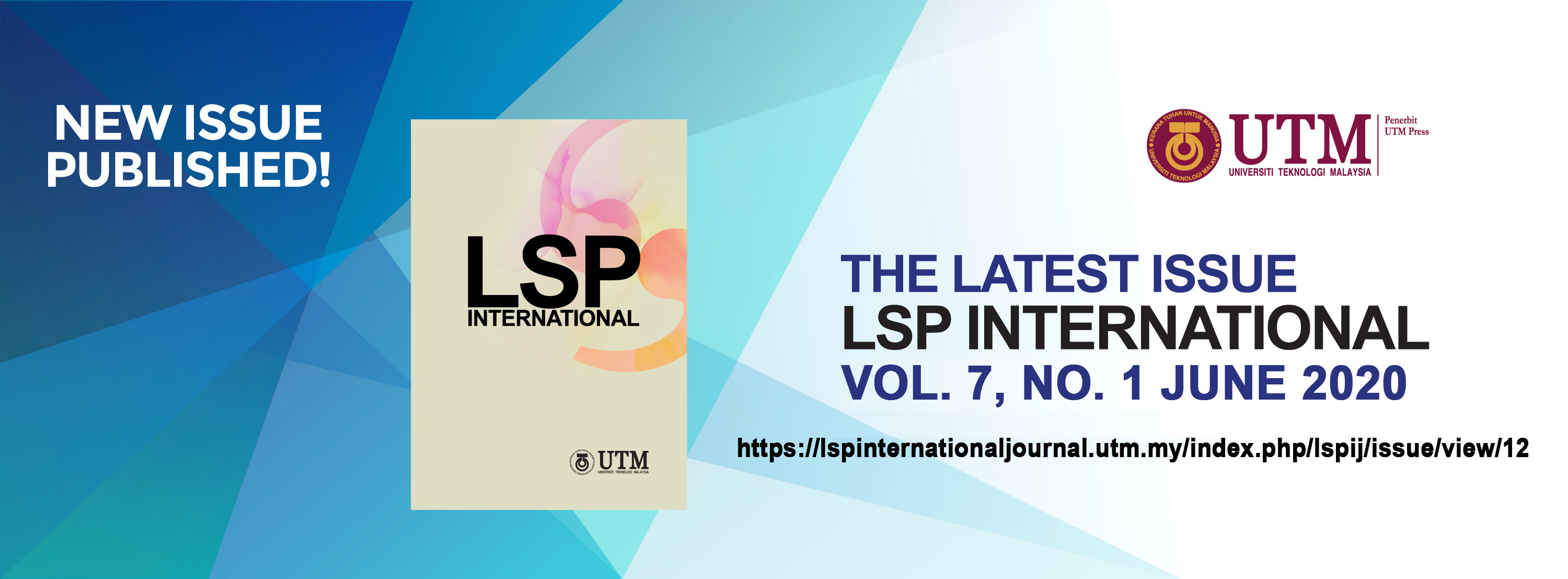Quality Teaching Practice: Value Education in the Language Classroom
DOI:
https://doi.org/10.11113/lspi.v7n1.101Abstract
The latest Malaysian Educational Blueprint (2013-2025) asserts the importance of producing value-driven Malaysians through education. English language teaching should be aimed beyond producing more proficient users as it possesses a nature that is particularly suitable for value incorporation. This research aims to investigate how English teachers communicate values to students, the kinds of values communicated and whether the values communicated are stipulated by the Ministry of Education. This research utilized a qualitative case study approach on two respondents, an experienced English teacher and a novice English teacher. Their lessons were videotaped, transcribed and coded based on a set of established analysis tool. Semi-structured interviews were also conducted to further understand the values depicted by the respondents. The results of the research show that teachers consciously incorporated values through selected topics, tasks and explicit moral statements. They subconsciously transmitted values through classroom rules and regulations, curricular substructures and expressive morality. It is found in this research that teachers applied much more subconscious approaches to communicate values than that of conscious ones during teacher-student encounter, with classroom facilitation being used as the medium most frequently. The kinds of values communicated included spiritual, intellectual, esthetical, positive, interactional, citizen, economical and modernized values. About half of the values communicated were stipulated by the Ministry of Education. This research provides new insights into how Malaysian English teachers can improve the quality of their teaching by harnessing the full potential of a language classroom to educate values.
References
Allport, G.W. 1961. Pattern and Growth in Personality. New York: Holt, Rinehart and Winston.
Akbari, R. and Tajik, L. 2012. Second-language Teachers’ Moral Knowledge Base: A Comparison between Experienced and Less Experienced Male and Female Practitioners. Journal of Moral Education. 41(1): 39-59.
Asif, T., Guangming, O., Haider, M.A., Colomer, J., Kayani, S, and Amin, N. 2020 Moral Education for Sustainable Development: Comparison of University Teachers’ Perceptions in China and Pakistan. Sustainability. 12: 3014.
Beane, J. A. 2002. Beyond Self-interest: A Democratic Core Curriculum. Educational Leadership, 59(7): 25-28.
Cresswell, J. W. 2012. Education Research: Planning, Conducting, and Evaluating Quantitative and Qualitative Research. 4th ed. Boston: Pearson Publication.
Crookes, G. 2003. A Practicum in TESOL: Professional Development Through Teaching Practice. Cambridge University Press.
Gass, S. M. and Mackey, A. 2000. Stimulated Recall Methodology in Second Language Research. London: Lawrence Erlbaum Associates.
Ghafar et al. 2011. Integrated Curriculum Concepts on Malaysia: Knowledge and Application Differentiation. European Journal of Social Sciences. 19(2): 208-217.
Halstead, M. and Taylor, M. J. 1996. Values in Education and Education in Values. London: Falmer Press.
Haydon, G. 1997. Teaching About Values: A New Approach. London: Cassell.
Hussin, S. 1989. Pengajaran Nilai dalam Kurikulum. Petaling Jaya: Fajar Bakti.
Jackson, P. W., Boostrom, R. E. and Hansen, D. T. 1993. The Moral Life of Schools. San Francisco: Jossey-Bass Publishers.
Kluckholm, F. R. and Strodtbeck. F. L. 1961. Variations in Value Orientations. Row Peterson, Evanston, ILL.
Krathwohl, D. R. 1993. Methods of Educational and Social Science Research: An Integrated Approach. New York: Longman.
Lichtman, M. 2006. Qualitative Research in Education: A User’s Guide. California: Sage Publication.
Martin, N. K. and Baldwin, B. 1994. Beliefs Regarding Classroom Management Style: Differences between Novice and Experienced Teachers. Paper presented at the Annual Conference of the Southwest Educational Research Association.
Melo, P. 2003. Ethical Conflicts in Teaching, The Novice Teacher’s Experience. Connections. 3: 175-189.
Merritt, E. G., Hale, A., Archambault, L. 2018. Changes in Pre-service Teachers’ Values, Sense of Agency, Motivation and Consumption Practices: A Case Study of an Education for Sustainability Course. Sustainability. 11: 155.
Ministry of Education. 2003. Huraian Sukatan Pelajaran Bahasa Inggeris Tingkatan 1-5. Retrieved 8 December, 2014, from http://jabatanbahasastar.wordpress.com/2011/07/16/sukatan-pelajaran-huraian-sukatan-pelajaran/.
Ministry of Education. 2013. Preliminary Report: Malaysia Education Blueprint 2013-2015. Retrieved 8 December, 2014, from http://www.moe.gov.my.
Mitias, M. H. 1992. Moral Education and the Liberal Acts. United Sates of America: Greenwood Press.
Narvaez, D. and Lapsley, K. 2006. Teaching Moral Characters: Two Strategies for Teacher Education. In Press, Teacher Educator.
Robinson, G. and Moulton, J. 2005. Ethical Problems in Higher Education. United States of America: iUniverse Inc.
Saye, J. W. 1998 Creating Time to Develop Student Thinking: Team-teaching with Technology. Social Education. 62(4): 356-362.
Shaaban, K. 2005. A Proposed Framework for Incorporating Moral Education into the ESL/EFL Classroom. Language, Culture and Curriculum. 18(2): 201-217.
Schuitema, J., Dam, G. T. and Veugelers, W. 2008 Teaching Strategies for Moral Education: A Review. Journal of Curriculum Studies. 40(1): 69-89. DOI: 10.1080/00220270701294210.
Thomas, E. L. W. Y. N. 1997. Teacher Education and Values Transmission: Cultural Dilemmas with Difficult Choices. Educational Dilemmas: Debate and Diversity. London: Cassell. 246-259.
Wang, Z. 2009. Study on Countermeasure on Moral Education through School Network. US-China Education Review. 6(1): 44-48.
Williams, R. M. 1968. Values, in Sills, E., (ed.). International Encyclopedia of the Social Science. New York: Macmillan.
Yin, R. 2009 Case Study Research: Design and Methods. Fourth edition, Thousand Oaks, CA: Sage Publications.
Zajda, Joseph. 2018. Researching Values Education in the Classroom: A Global Perspective Education and Society. 36(2): 29-47.
















